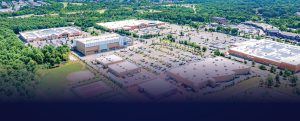
Los Angeles has had its fair share of challenges over the decades, but it continues to attract new talent and investors seeking opportunities. These challenges include the financial crisis, COVID-19, and Los Angeles’s biggest Achilles heel – housing construction. They have all shaped the area’s current real estate landscape and the shifting market preferences. However, Los Angeles is resilient, and in this article, Matthews™ examines why opportunity will always be present in this apartment market.
A Brief Look Back in History
As one of the most unaffordable and highly sought-after metros in the nation, Los Angeles is no stranger to fluctuations in the multifamily sector. To highlight the city’s history of resilience, let’s review almost a century of apartment trends in Los Angeles. From the financial crisis to the rise and fall of industries and other shake-ups like COVID-19 – here’s how different times have shaped the current real estate landscape.
1920s
The most defining building boom in the history
of Los Angeles took place in the free-spending, development-crazy era of the 1920s. This explosion was funded by oil, entertainment, and real estate revenue. As the population grew, the demand for housing increased. But, unlike today, there was plenty of undeveloped land to build on. For much of the 1920s, 60 percent of Central Los Angeles was classified and zoned as B residential.
1980s
Los Angeles built roughly 2.5 million new housing units in the 1980s. This boom was tied to the rise of the aeronautics industry, which fueled robust residential development. From there, Los Angeles soon became the West Coasts’ financial hub, which led to 113 million square feet of added office space. This decade paved the wave for the overbuilding that defined the recession in 1990.
1990s
This decade was marked as the golden age of retail – the city grew by 58 million square feet of retail inventory. However, housing prices took a severe plunge during this era, especially in major markets like Los Angeles. High construction costs, limited land, and reduced tax incentives hampered the development of new apartment units. By 1997 the market had recovered, preceded by an extended period of relaxed underwriting practices, excess capital chasing returns, cap rate compression, and increased asset values.
2000s
New apartments slowed even more in the early to mid-2000s, with around 200,000 units delivered. These units weren’t being built in coastal cities where most Californians worked but instead were located on the outskirts of Los Angeles. In 2008, the global economy faced an economic downturn and evictions and foreclosures plagued Los Angeles. The average rent in Los Angeles fell almost four percent as new apartment complexes came online and vacancy rates increased. The market fully recovered in 2013.
2020s
The COVID-19 pandemic was introduced to the United States in 2020, and apartment owners were faced with a growing number of residents asking for assistance. California also enacted a temporary eviction moratorium to protect tenants and extend timelines to repay any past due rent related to COVID-19 circumstances. In the short term, deliveries were put on hold, further contributing to the housing crisis in Los Angeles. However, even during the height of the worldwide pandemic, apartments attracted an impressive $8 billion ($15 billion in 2019) in investment volume in 2020. The market is making strides towards a full recovery in 2022.
Cities like Los Angeles have a history of overcoming various crises, reinventing themselves, and attracting new talent and investment. As such, these cities contain the best and safest rental markets in the country.
The Challenges Plaguing Los Angeles Construction
The fundamental difference in housing costs in Los Angeles comes down to the value of the land. According to the UCR School of Business Center for Economic Forecasting and Development, building multifamily properties in the City of Los Angeles costs about $100,000 more per unit than any other nearby Southern California city. Further, land costs account for nearly 17 percent of a multifamily project’s total development costs, compared to less than two percent in other markets.
The reasons for sluggish housing construction over the past decade are multi-faceted. Developers are finding it increasingly difficult to build in Los Angeles due to high costs of land, expensive rent, the ongoing threat of rent control, eviction moratoriums, local zoning ordinances and restrictions, and difficulty acquiring permits, labor, and materials. Despite these obstacles, the development pipeline in Los Angeles is robust as developers target infill locations and redevelopment opportunities. The lack of adequate development has led to a chronic housing shortage across Los Angeles. As a result, homeowners hold onto their increasingly valuable property, renters stay in rent-controlled buildings longer, and millennials linger at home with families. Young families have also increasingly moved out of Los Angeles County to suburbs searching for affordability. Overall, multifamily development is still expected to grow in California as the economy rebounds. The consensus is that the urban economy will come “roaring back,” as will the appeal of living, working, and playing in downtown. Throughout the last 80 years, the evolution of real estate development in Los Angeles County demonstrates the region’s extraordinary ability to adapt and reinvent itself, making the most of its assets at any given time. This resilience has served Los Angeles well and remains an encouraging feature to hold assets long-term, particularly in uncertain times.
The Current Rental Market
Approximately four million people call the City of Los Angeles home, making it the second-largest city
in the United States. When adding together the smaller cities that makeup Los Angeles County, the urban area totals more than ten million people. As such, Los Angeles is one of the strongest rental markets in the nation. Already, the Los Angeles apartment market has returned to pre-pandemic activity. Although vacancy climbed three percentage points in parts of Los Angeles’ urban core early in the pandemic, they have since recovered. Leasing apartments is at a 15-year high, unemployment has fallen to four percent, and rents have risen three percent in 2021.
Why Investors Look Outside the Metro
Investor sentiment is strong, with many owners and operators indicating that their properties are performing better than pre-pandemic dates. Multifamily properties have amassed $7.7 billion in investment volume through September 2021 in Los Angeles – outpacing industrial for another year in a row. Apartments have always been safe and reliable in the region, and the same holds true now. Investors chase safety and yield as economic forecasts predict strong rent growth for apartments in the months and years ahead. Given these fundamentals, why are investors looking outside of the metro? This trend started before the pandemic but has recently gained steam in the last 12 months. Investors are exiting the market and moving capital to markets such as Arizona and Texas. The reasons include regulatory and legislative challenges, low cap rates, and larger assets – investors aren’t exiting Los Angeles due to better returns or opportunities. From rent control policies restricting price appreciation to the recent eviction moratorium that prevents landlords from rectifying unpaid rent, apartment owners feel they have few options to improve their investment positions in California. In 2019 and 2020, buyers were hard-pressed to justify paying asking prices for Los Angeles apartments. Investors who look beyond the pandemic’s conditions will remember what has enabled the local apartment market to thrive over the decades. As housing is a human necessity, and chronically undersupplied, Los Angeles will continue to provide landlords with tenants. Buyers must be prepared for the cost of owning a complex for the months or years it may take to achieve profitability. Still, when the sector returns to its growth period, it is only poised to appreciate as one of the strongest apartment markets in the country.
The Storm Will Pass
One thing is certain, a solid multifamily property in a promising location will survive and thrive post-COVID-19 and for decades to come. With the imbalance of supply and demand, coupled with the large renter pool, the gentrifying neighborhoods, value-add deals, and asset appreciation, Los Angeles will continue to see strong fundamentals and a steady stream of investment opportunities.









